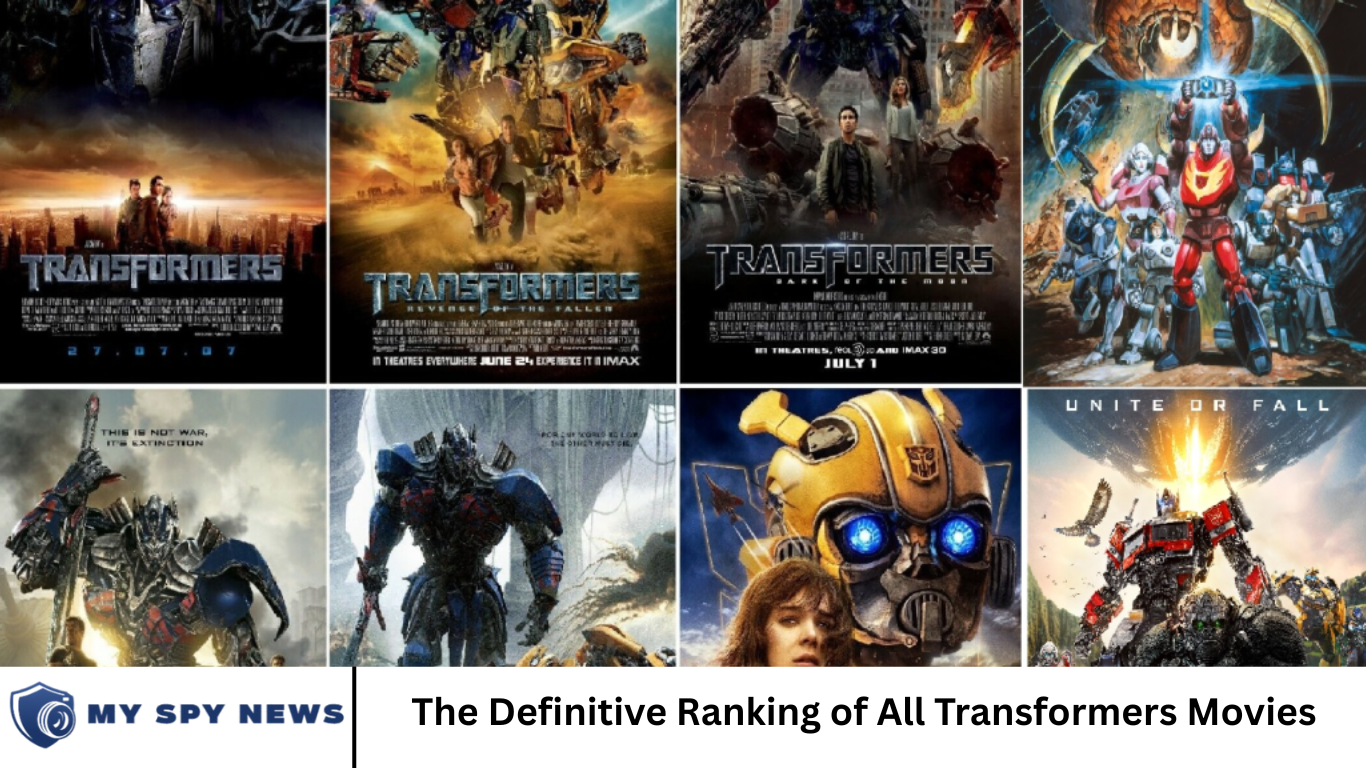Since roaring onto the big screen in 2007, the Transformers franchise has been a rollercoaster of metal-clashing spectacle, slow-motion explosions, and robotic drama from the stars of Cybertron. What began as a nostalgic reimagining of a beloved 1980s cartoon quickly transformed into a global cinematic juggernaut—spawning sequels, prequels, reboots, and billions in box office returns.
Since 2007, Michael Bay’s explosive live‑action adaptations have cemented Transformers as a blockbuster staple. Featuring giant, shape‑shifting robots and eye‑popping visual effects, the franchise captures imagination—but fan and critical response has been mixed.
Here’s a fresh, definitive ranking of the six main films, looking beyond box office success to craftsmanship, storytelling, character, and technical artistry.But with great power comes… questionable storytelling. Some entries dazzled with heart and visual innovation, while others got lost in convoluted lore and chaotic editing.
More Read: What Makes Slot 777 a Top Choice for Online Gamers?
Ranking Criteria
To evaluate fairly, each movie is assessed across four pillars:
- Story & Characters – Clarity, emotional arcs, and relatability
- Visual & Special Effects – CGI quality, design, and innovation
- Action & Direction – Choreography, pacing, distinctiveness
- Cultural & Franchise Impact – Box office resonance, fan legacy
- Each film was watched multiple times to ensure a balanced evaluation.
Ranked List of Films
Transformers: Revenge of the Fallen (2009)
- Story & Characters: A scattered narrative with caricatured comic relief and convoluted mythology undermines coherence.
- Visual & Effects: Often over‑CGI’d, especially during action set‑pieces like the pyramid.
- Action: Excessive editing hampers spatial awareness; frenetic but exhausting.
- Legacy: Boom at box office, backlash from critics/fans; seen as the franchise’s low point.
Transformers: The Last Knight (2017)
- Story & Characters: Medieval‑meets‑modern mashup feels tonally fractured despite strong performances from McGregor and McShane.
- Visual & Effects: Gritty realism works at times, but CGI mishmash undermines epic takeaways.
- Action: Ambitious but chaotic—mixing magic, history, and robot warfare.
- Legacy: Box office disappointment; widely acknowledged as the weakest entry in Michael Bay’s run.
Transformers: Age of Extinction (2014)
- Story & Characters: Positive shift with Mark Wahlberg’s relatable lead; government‑conspiracy twist adds depth.
- Visual & Effects: Sleeker character designs; Dinobot introduction shines alongside Tesla homage.
- Action: Impressive large‑scale battles, though editing occasionally muddles clarity.
- Legacy: Franchise revival in China; reintroduced optimism post-Dark of the Moon.
Transformers: Dark of the Moon (2011)
- Story & Characters: Intrigue around the moon landing and hidden history; emotional growth for Sam.
- Visual & Effects: Standout Chicago battle—flawless integration of CGI and wide shots.
- Action: Tactical, cinematic battles show maturity; less color‑wash, more gritty heat.
- Legacy: Best‑selling and critically strongest in Bay’s lineup; often cited as franchise peak.
Bumblebee (2018)
- Story & Characters: Heartfelt, 80s‑kid energy with genuine emotional arcs between Charlie and Bee.
- Visual & Effects: Nostalgic designs and restrained CGI complement nostalgic aesthetic.
- Action: Intimate, character‑driven action—fewer explosions, stronger emotional beats.
- Legacy: Highest critical praise; heralded a tonal re‑boot and a fan favorite.
Transformers (2007)
- Story & Characters: Clean and well‑paced origin featuring charismatic characters and character arcs.
- Visual & Effects: Groundbreaking CGI; robot transformations felt real, organic.
- Action: Clear, measured, and kinetic battles—with emotional payoffs.
- Legacy: Template for modern blockbuster superhero films; tremendous success and cultural saturation.
Legacy & Cultural Impact
- Innovation: 2007’s original brought Transformers to life, revolutionizing blockbusters.
- Franchise Arc: Post‑2007 saw quality dip and boom cycles—A:OE revived interest, Bumblebee rebooted tone.
- Pop Culture: Quotable moments (“Fallen, I am….”), toy lines, video games, and memes ensured long‑term relevance.
- Future: With discussions of a shared Transformers cinematic universe and more character‑driven entries, the franchise continues evolving.
Frequently Asked Question
Why isn’t Bumblebee #1?
Despite strong character work and visuals, it’s not a franchise origin point. The remake‑hip remake feels a spiritual reboot rather than the catalyst.
Is Michael Bay returning to the series?
No confirmation yet. After The Last Knight, Bay stepped back. Future installments likely won’t bear his distinctively bombastic stamp.
Where does Rise of the Beasts fit?
Released after our ranking, it introduces Maximals and Predacons in the 90s. Initial reception leans positive—could land around Dark of the Moon or Age of Extinction upon full critical and fan evaluation.
Are there plans for sequels/spin‑offs?
Yes. A cinematic universe is underway, with Threading the Needle and a rumoured G.I. Joe crossover in early development. Bumblebee spin‑off is under consideration.
What makes the original film so special?
It struck a perfect balance—human connection, top‑tier CGI, smart pacing, and intro to this universe. It felt fresh, not franchise‑heavy.
Why was Revenge of the Fallen so disliked?
For many, it prioritized spectacle and mythology over clarity and character. Comical targets fell flat alongside an unfocused third act.
Can newcomers start with Bumblebee?
Absolutely. It works standalone, with heartfelt storytelling. For franchise context and mythology, go back to 2007 afterward.
Conclusion
The Transformers cinematic journey is a cinematic rollercoaster: from groundbreaking brilliance and nostalgic charm to narrative excesses and inconsistent execution. The ranking reflects both craft and cultural resonance—but the list is flexible. Are you team original Transformers or moved by Bumblebee’s emotional warmth?


